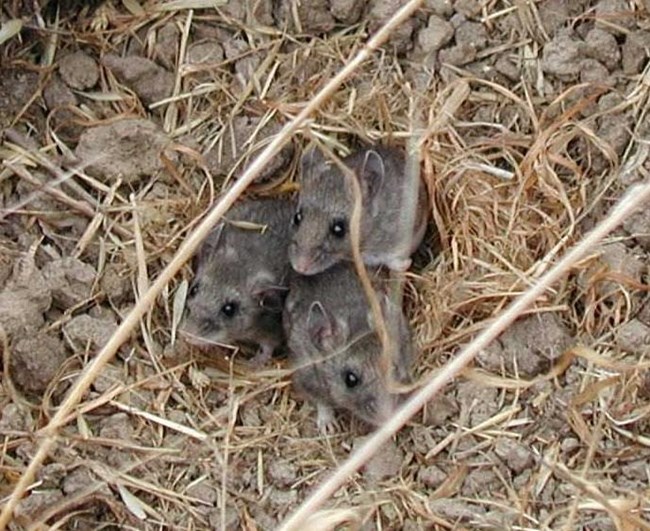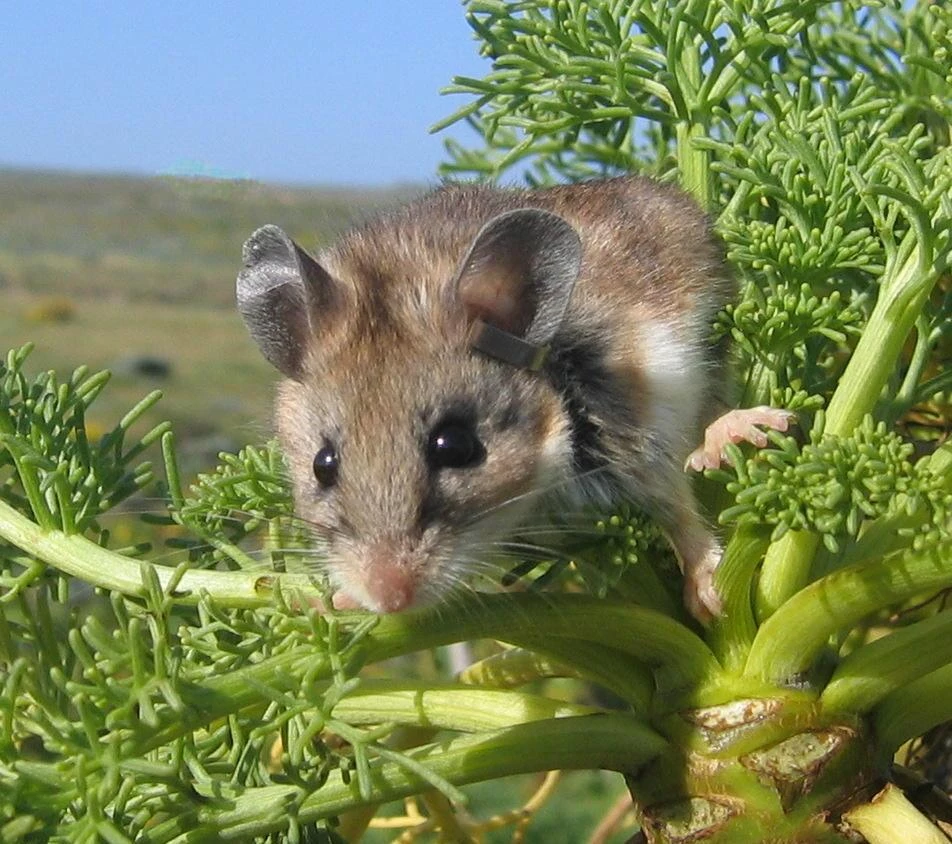
NPS
Why We Care
Each of the five Channel Islands is home to an endemic subspecies of deer mouse (Peromyscus maniculatus). In some cases, deer mice are the only terrestrial mammal occurring on the island. Deer mice exist on the islands in very high densities and are found in all habitats, making them integral components of island ecosystems.
Several studies incorporating monitoring data have provided important information on the natural role of deer mice in island food webs. Research on San Miguel Island showed that as seed predators mice had limited impacts on giant coreopsis (Coreopsis gigantea) populations, especially when compared to the negative competitive effects of non-native annual grasses. Monitoring data also show that deer mouse densities on San Miguel Island are strongly limited by the endangered island fox (Urocyon littoralis littoralis), whereas on Santa Barbara Island, where there are no foxes, mouse densities are much more variable.
As part of the terrestrial vertebrate monitoring program at Channel Islands National Park, information collected on deer mice will inform park managers not only about the health and status of those populations, but will also increase our understanding of how island ecosystems respond to changing environmental conditions.
How We Monitor
Deer mice populations at Channel Islands National Park have been monitored since 1992.
- Nine permanent grids have been established in various habitats on three islands: Anacapa, San Miguel and Santa Barbara.
- Grids are sampled twice each year during the spring and fall seasons.
- Mark/recapture methods are used to determine population densities.

Catherin Schwemm
Last updated: December 6, 2018
